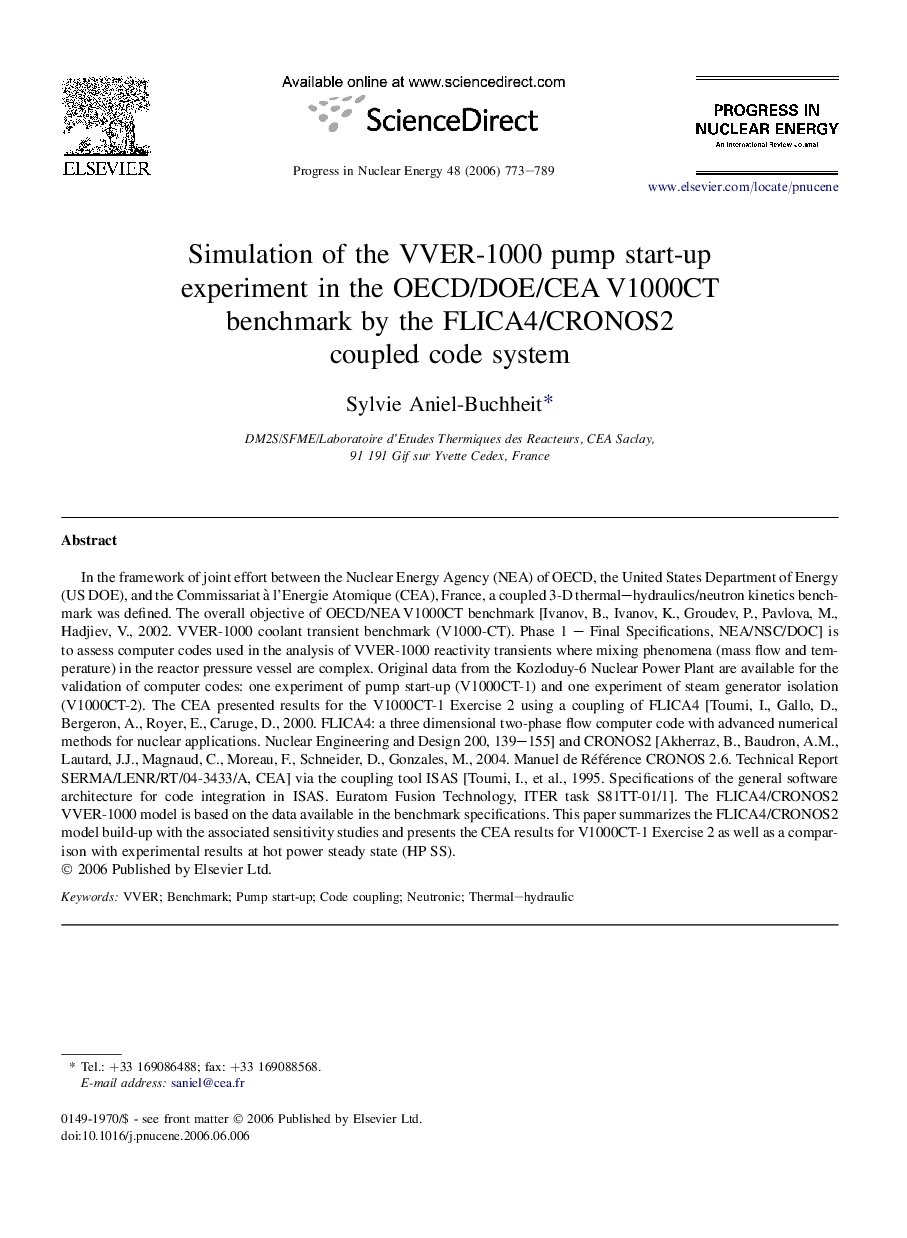| Article ID | Journal | Published Year | Pages | File Type |
|---|---|---|---|---|
| 1741502 | Progress in Nuclear Energy | 2006 | 17 Pages |
In the framework of joint effort between the Nuclear Energy Agency (NEA) of OECD, the United States Department of Energy (US DOE), and the Commissariat à l'Energie Atomique (CEA), France, a coupled 3-D thermal–hydraulics/neutron kinetics benchmark was defined. The overall objective of OECD/NEA V1000CT benchmark [Ivanov, B., Ivanov, K., Groudev, P., Pavlova, M., Hadjiev, V., 2002. VVER-1000 Coolant Transient Benchmark (V1000-CT). Phase 1 – Final Specifications, NEA/NSC/DOC] is to assess computer codes used in the analysis of VVER-1000 reactivity transients where mixing phenomena (mass flow and temperature) in the reactor pressure vessel are complex. Original data from the Kozloduy-6 Nuclear Power Plant are available for the validation of computer codes: one experiment of pump start-up (V1000CT-1) and one experiment of steam generator isolation (V1000CT-2). The CEA presented results for the V1000CT-1 Exercise 2 using a coupling of FLICA4 [Toumi, I., Gallo, D., Bergeron, A., Royer, E., Caruge, D., 2000. FLICA4: a three dimensional two-phase flow computer code with advanced numerical methods for nuclear applications. Nuclear Engineering and Design 200, 139–155] and CRONOS2 [Akherraz, B., Baudron, A.M., Lautard, J.J., Magnaud, C., Moreau, F., Schneider, D., Gonzales, M., 2004. Manuel de Référence CRONOS 2.6. Technical Report SERMA/LENR/RT/04-3433/A, CEA] via the coupling tool ISAS [Toumi, I., et al., 1995. Specifications of the general software architecture for code integration in ISAS. Euratom Fusion Technology, ITER task S81TT-01/1]. The FLICA4/CRONOS2 VVER-1000 model is based on the data available in the benchmark specifications. This paper summarizes the FLICA4/CRONOS2 model build-up with the associated sensitivity studies and presents the CEA results for V1000CT-1 Exercise 2 as well as a comparison with experimental results at hot power steady state (HP SS).
